Digital showrooms let you share your collections with a click of a button and schedule virtual appointments or set up virtual fitting rooms with retail buyers.
Depending on the software, you can share 3D product images and product videos and accept purchase orders, all within the same platform.
Ahead, learn what a digital showroom is and digital showroom platforms to consider using. Plus, virtual selling best practices and how brands are getting this new way of selling right.
What is a digital showroom?
Digital showrooms—also referred to as virtual showrooms—are an innovative solution that lets brands and retail buyers engage and sell products through an online platform.
It replaces physical showrooms and trade shows, eliminating the need for a physical location and physical samples to show new collections. Virtual showroom software bridges the gap between the digital and physical worlds.
Brands create and organize new collections, including product photos and details, pricing, and delivery information. Some digital showroom platforms have 3D virtual sampling functionalities, which entirely eliminates the need for physical sampling.
Retail buyers are invited to visit the showroom at a time that suits them. They can explore your new products or collections digitally and then make purchase orders directly in the same platform.
How to build a digital showroom: 6 software to consider
There are many digital showroom software and platforms available to retailers and brands today.
Some have more advanced features and functionalities than others, but they all help streamline the B2B ecommerce sales and buying process.
Let’s take a look at a few here:
1. JOOR
JOOR is a wholesale and data exchange platform for beauty, fashion, and home goods retailers.
Its digital showroom also serves as a marketplace, as it already has thousands of users. Brands use JOOR to simplify their B2B sales process and reach new retailers already using the platform. The same goes for retailers. Buyers can discover new brands to stock in their store via JOOR.
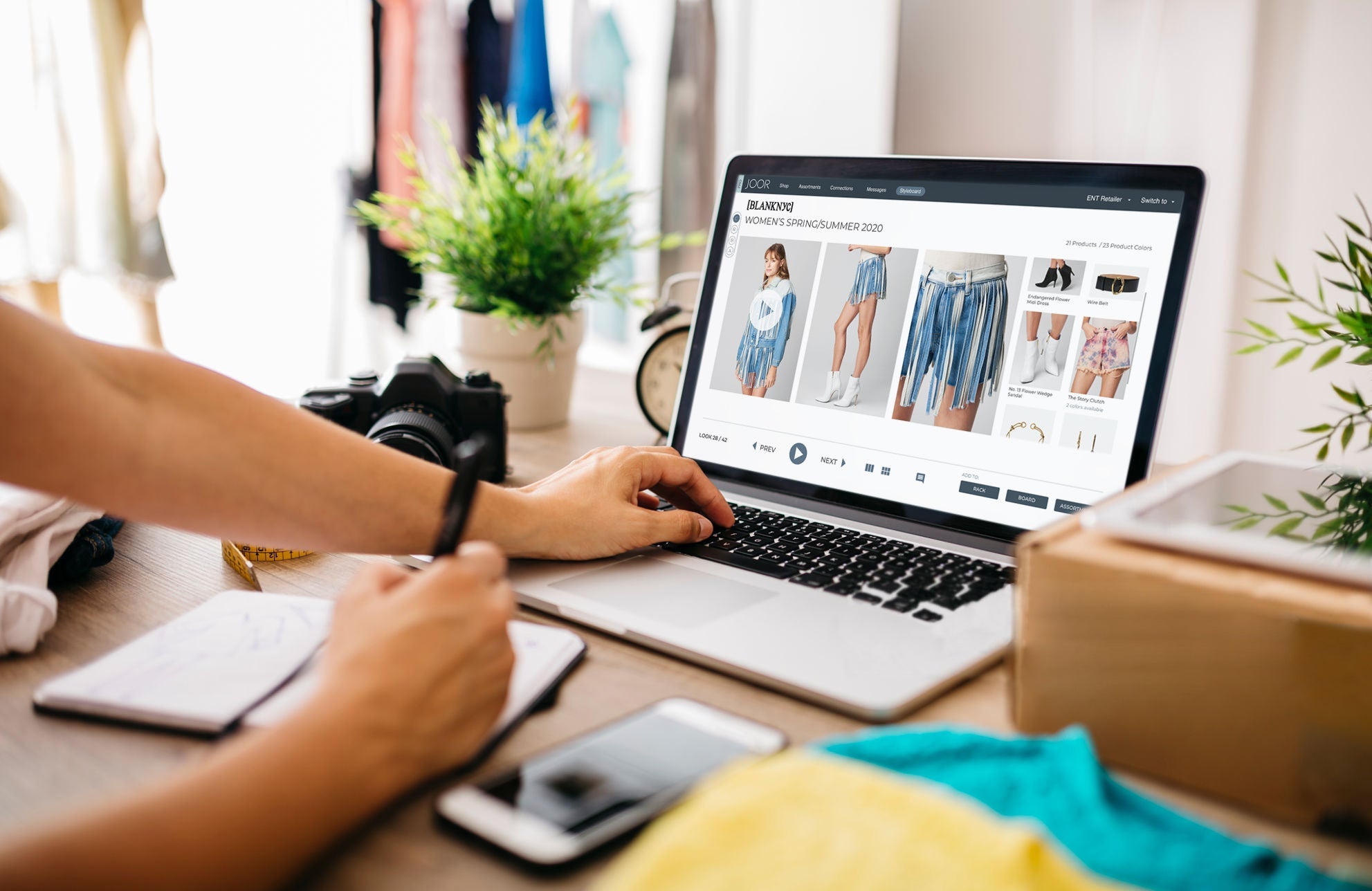
You can show off your products using dynamic video, 3D interactive images, and audio. For example, share a video of your runway show, a video of you explaining the collection, and product performance reviews.
You can also schedule virtual appointments with retail buyers to share details about the collection you’re selling. It also has a style board feature, so product assortments can be personalized to each buyer during online showroom appointments.
You can arrange your products into specific collections depending on the buyer’s past purchases, their region, and other factors to help simplify the process for them.
JOOR’s tool, JOOR Passport, centralizes and digitizes trade show experiences across multiple global fashion events.
2. BrandLab360
BrandLab360 recreates brand showrooms and retail spaces using immersive technology and virtual reality.
With its platform, you can create any online store in a 3D digital format, including integrated live voice and video communication that links seamlessly to transactional ordering platforms.

Each virtual showroom environment can host unlimited users, allowing you to show your products to multiple buyers simultaneously. You can also invite consumers and friends to their own private shopping experience.
“The fashion industry has been transformed over the past few years by advances in ecommerce and digital marketing, and we will see further significant growth with the introduction of VR technology,” says Jennifer Drury, founder and CEO BrandLab360. “Brands have an instant global reach with minimum investment to new markets. And time-poor buyers are able to view more brands and collections than ever before, without the need for travel.”
3. Dtail
Dtail is a 3D fashion platform developed by PixelPool. In addition to Dtail software, PixelPool offers professional services such as virtual sample production, virtual environment creation, and one-off virtual selling experiences.
Dtail lets you use 3D virtual samples in the key phases of fashion product development. Its end-to-end solution means that the same virtual sample evolves with the planning, merchandising, and sales process. All product updates are synced.
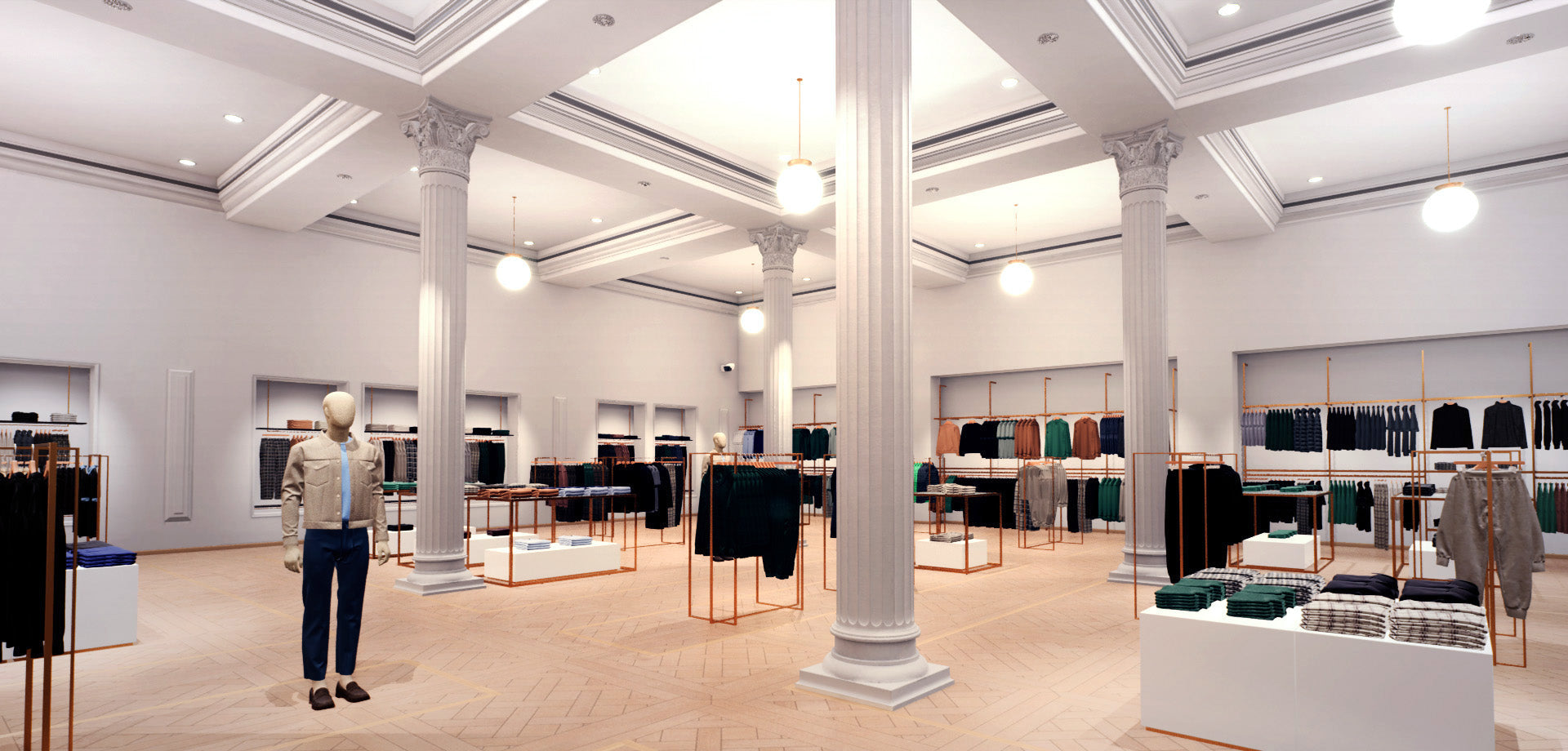
The purpose of Dtail is not to receive purchase orders but to generate them using the Dtail virtual showroom. Those purchase orders can then be forwarded to existing order intake systems.
Once you configure Dtail, it shows up-to-date synchronized product data from your product lifecycle management (PLM) or enterprise resource planning (ERP) system. You can track updates to your 3D library and add new virtual samples immediately to your digital showroom atmosphere.
“The benefits of virtual samples are documented far and wide and are being embraced by the fashion industry at long last,” says Joost Alferdinck, Chief Product Officer at Dtail. “Brands are seeing the true potential of working digitally, especially in these times of lockdowns and closed showrooms. Virtual samples offer great cost and environmental benefits. There is no cost for logistics, no photography, no carbon footprint, and there are infinite available items.”
You don’t have to wait to photograph samples and update linesheets with Dtail’s virtual sampling capabilities. Product samples are available globally in the cloud and usable in a range of connected 3D solutions, like CLO 3D and Browzwear VStitcher. This drastically increases your speed to market.
4. Stitch
Stitch is a digital showroom that helps you leverage your brand story—something it calls “storyselling.”
With its platform, you can build relationships and connect with buyers from anywhere. You can streamline selling your brand and telling the story behind each product or collection for more focused and efficient wholesale appointments.
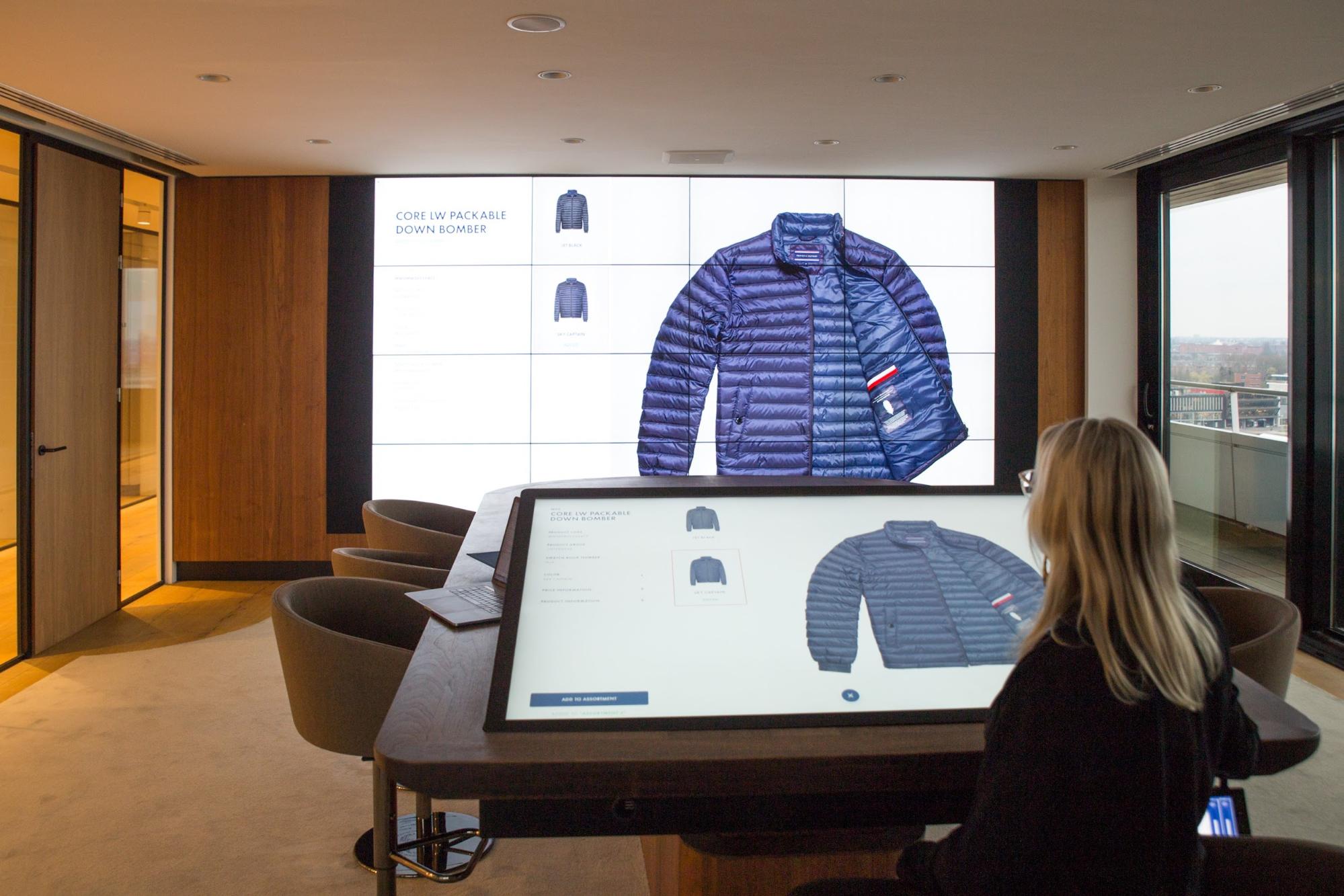
Stitch helps you create engaging B2B experiences while also tackling the inefficiencies and waste of wholesale selling, making it smarter, faster, and more sustainable.
Popular fashion brands like Tommy Hilfiger, Clavin Klein, and Havaianas use Stitch to achieve sample reduction targets.
5. Launchmetrics
Launchmetrics is a Brand Performance Cloud used by fashion, luxury, and beauty businesses to connect with consumers in a constantly changing landscape. It helps you optimize the use of creative assets and engage with retail buyers, editors, and influencers to amplify your brand and measure performance.
This is done with its proprietary Media Impact Value, an AI-driven technology that lets you benchmark your performance against 2,000 competitors worldwide.
“Physical experiences will remain a major part of the industry,” says Alison Bringé, chief marketing officer at Launchmetrics. “However, the true success in the long term will be found in how brands merge both the digital and physical—to create impactful, share-worthy moments both on- and offline."
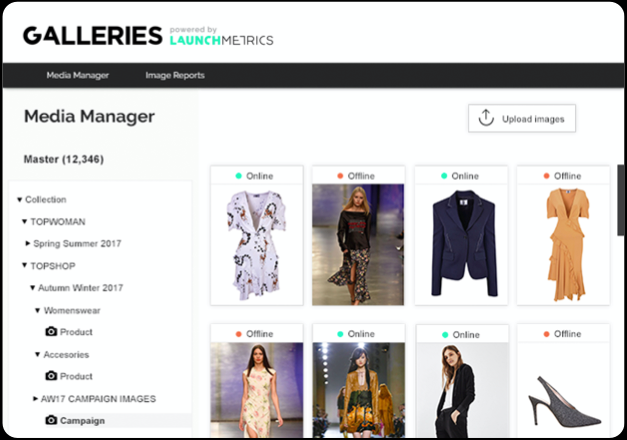
Launchmetrics’ digital events let you create inspiring and engaging experiences that go beyond fashion week or showroom presentations. And its Galleries app helps you continue engagement. Buyers, editors, stylists, and influencers can zoom into products and download the high-res images and videos they need.
6. NuORDER
NuORDER’s digital showroom helps buyers and brands collaborate online via its B2B platform. You can showcase products, customize buyer appointments, and digitize your selling process to boost sales.
Buyers can view your interactive virtual showroom by clicking a link that takes them straight to the assortment you want to show. You can share 360-degree product imagery and dynamic videos, and buyers can zoom in for more detailed views.
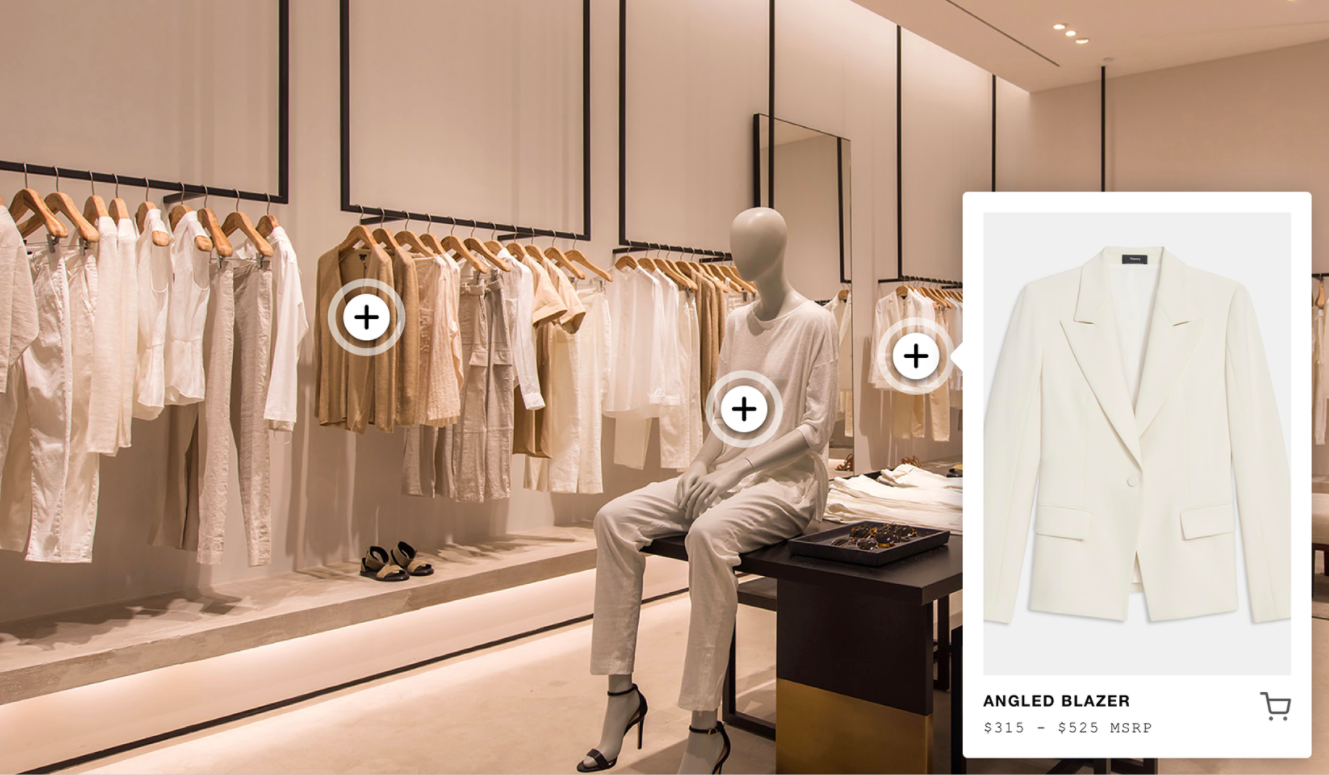
Use its shoppable hotspots to embed a product hotspot on top of a video or image and the page will be instantly shoppable.
NuORDER’s digital planning boards let you collaborate across teams, share ideas, and plan assortments. This way, you and your buyers can visualize collections making online payments.
5 digital showroom examples
1. Diesel
Italian clothing brand Diesel launched its own digital showroom, HYPEROOM. It’s a 360-degree digital platform created to engage with fashion buyers online and streamline the purchase order process.
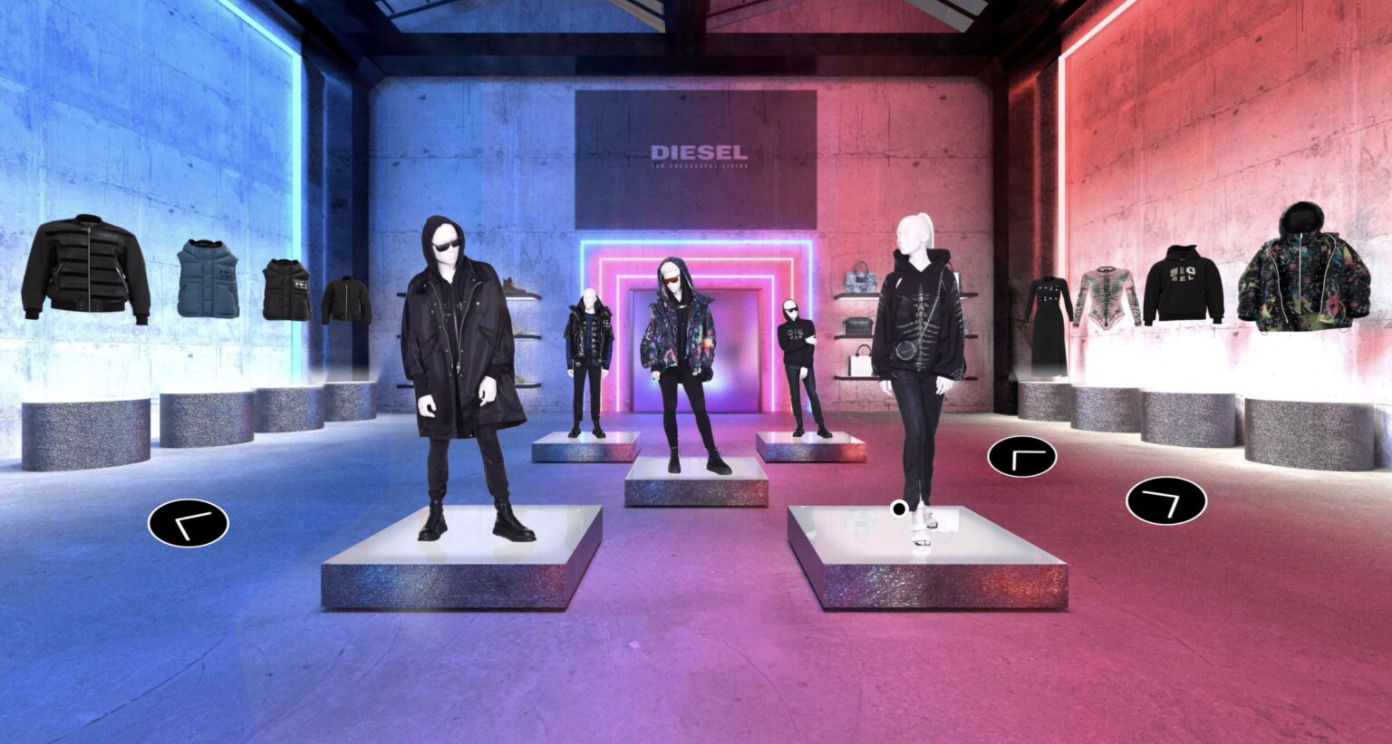
Diesel’s parent company, OTB, was involved in bringing HYPEROOM to life and helping to accelerate the digitization of the fashion industry. All of OTB’s brands have their own virtual showroom within HYPEROOM. Each keeps its own personality, values, and style in a customized area of the platform.
Retail buyers can immerse themselves in engaging remote buying sessions rather than traditional showroom appointments. 360-degree displays and 2D closeups let them view the products as if they were there in person.
There’s a dedicated virtual space for Diesel’s denim collections, including videos and high-quality images to show the look and feel of the products.
2. Laude the Label
Sustainable brand Laude the Label used JOOR to power its wholesale growth. Showrooms alone weren’t getting the brand’s mission across to buyers.
“Laude the Label needed a way to consistently communicate its brand story,” says Kristin Savilia, CEO at JOOR. “After moving their wholesale business online with JOOR, the brand saw 200% company growth and 138% retailer growth.”
By using a digital showroom, Laude the Label was able to effectively convey the sustainable nature of its products, including how they ethically create fashion.
90% of Laude the Label’s wholesale growth was reinvested into the alleviation of poverty and long-term social and economic benefits around the world.
3. Westport Group
Westport Group is a New York–based multi-brand organization. After joining BrandLab360 in 2020, it now operates its entire wholesale sales operation via BrandLabs digital platform.
Westport Group manufactures and licenses for brands such as Timberland, Steve Madden, and Nautica. Since linking its showroom to a completely tailored bespoke B2B ordering solution, Westport has seen a 10% increase in sales from many key customers.
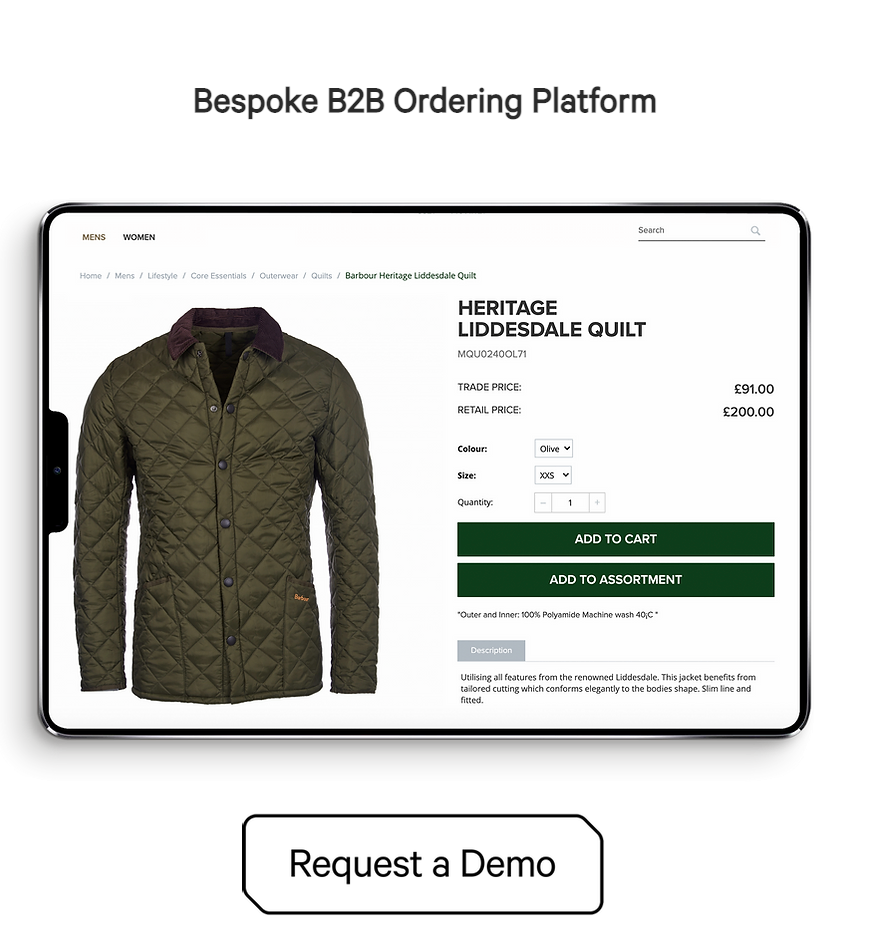
“Feedback from key clients, including large retailers such as Walmart and Saks, is one of the most rewarding outcomes for Westport,” says Drury. “Retail buyers commented on how refreshing it feels to meet in a replica of the physical showroom rather than using video conferencing facilities such as Zoom.”
4. Havaianas
Stitch helped Havaianas launch its digital showroom, create seasonal content, and train all sales teams in the EMEA region to sell digitally with almost no physical samples.
“It wasn’t easy, but the communication, commitment, and drive on both ends made it possible. We’re excited that Havaianas had a successful season. This way of selling will be valuable for the foreseeable future,” says Pin.
By going digital, Havaianas experienced a 70% decrease in sample costs and a 25% uplift on its future order target compared to last year.
“2020 was a year of reevaluation and adapting to new ways of working,” says Merel Werners, marketing director EMEIA Havaianas.
“We were already considering improving how we use samples for sell-in purposes, but the pandemic was the catalyst for us to go totally digital. Although some physical samples will still be required in certain circumstances, such as innovation, the virtual showroom provides an infinitely more immersive experience and streamlined sales tool.”
5. Fédération de la Haute Couture et de la Mode
In July 2020, the Fédération de la Haute Couture et de la Mode digitally hosted its Haute Couture Week. Launchmetrics developed a digital hub to bring the industry event online to press, retail buyers, and consumers worldwide. The virtual showroom even accumulated more than 19.4 million views on all channels including YouTube, Weibo, and Tencent Video.
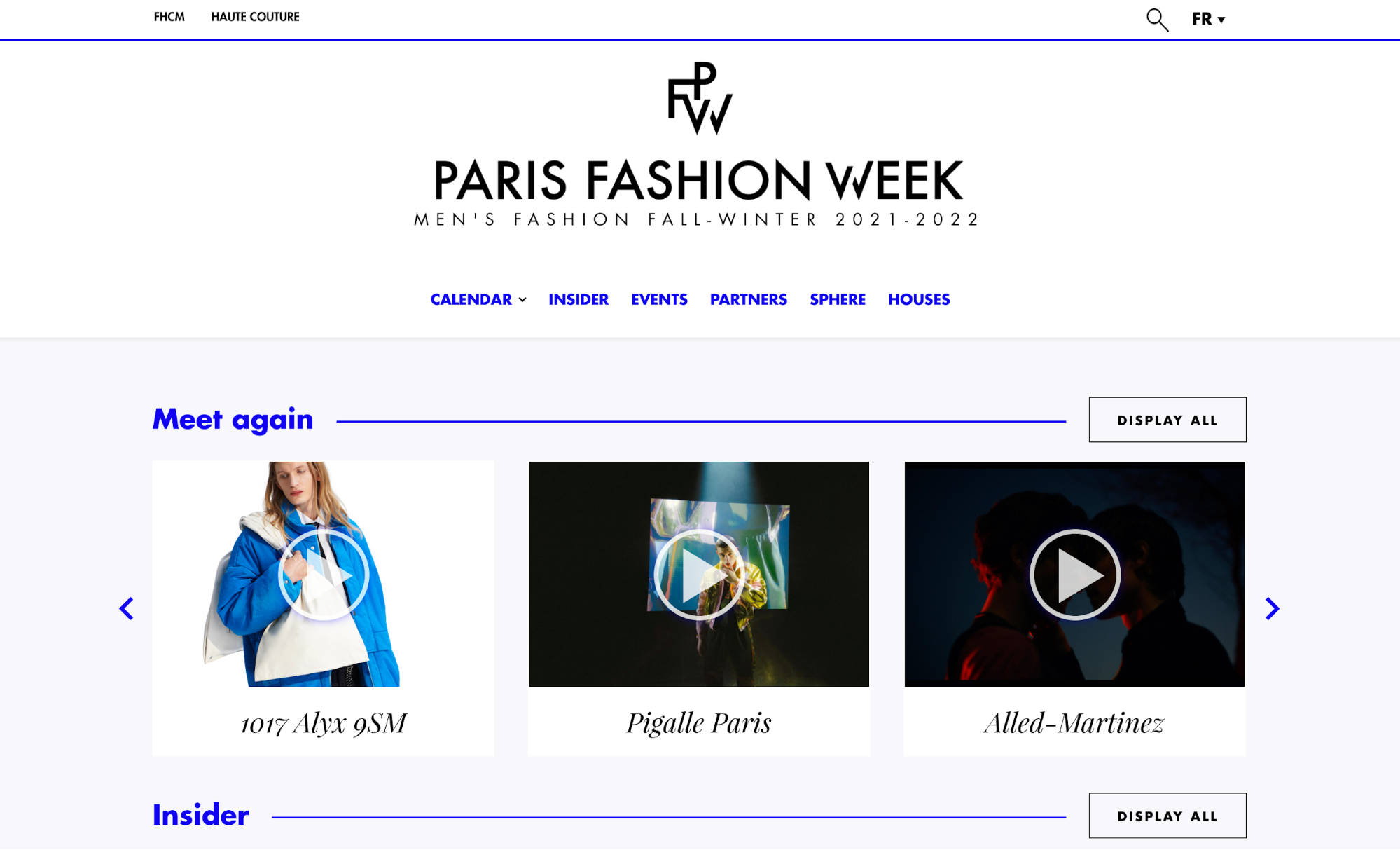
“Launchmetrics estimated that the media impact value of the seven days is to be valued at $65.1 million,” says Bringé. “The partnership was so successful that it continued in September and with Paris Fashion Week Men’s.”
What is the purpose of a virtual showroom?
There are many benefits to using digital showrooms for both retail buyers and brands, including easier scheduling, saving money, sustainability, and safety.
Digital showrooms are used in various industries, such as fashion, beauty, home goods, online car buying, and more.
Let’s look closer at the benefits of a running a digital showroom:
Reduce costs and improve sustainability
Digital showrooms reduce and sometimes eliminate the need for product sales samples. This is better for the environment and your bottom line.
“Virtual samples reduce time to market,” says Alferdinck. “They allow for a shorter development cycle so brands can react faster and reduce waste by developing products with a superior market fit. Isn’t that what sustainability in fashion should be about? Produce only what actually sells.”
Digital showrooms also reduce costs, for buyers and brands, associated with travel to trade shows and sales appointments and with maintaining a physical showroom.
Level up your product assortment planning
Once you’ve built a digital library of products, whether it’s via product photography or 3D images, it’s easy to start planning product assortments.
Depending on the digital showroom platform, you can search and add products from your library to build assortments that retail buyers can view. Unlike a physical showroom, with a virtual showroom you can do this planning from anywhere and on various devices. Then you can collaborate on assortments with your team or present them to buyers.
Go to market faster
Salesman sample shipments are oftentimes delayed from the factory. With virtual samples, you and your retail buyers immediately have full access to your collections. You don’t need to wait for physical samples to introduce your new collections to the market.
“When samples are less relevant in the process, more and more value unravels across the value chain,” says Pin. “This shortens a brand’s time to market and eventually helps to solve the imbalance between supply and demand in the fashion world.”
Simplify the wholesale buying process and make ordering more efficient
With digital showroom software, the entire ordering process takes place within the platform. You can streamline the purchase order (PO) creation process and avoid getting POs from each retail buyer in various formats. Aggregating orders for production also becomes easier.
Virtual showroom software also makes the ordering process easier for buyers. They must select the products from your product library and add them to their PO. It centralizes product details, letting buyers easily look up style or SKU numbers, color names, fabrics, size range, or delivery dates.
“By selling virtually, you can sell to more buyers in a shorter amount of time, and you can bring down the length of your sales window as well,” says Alferdinck.
Use data to boost sales
Most digital showroom platforms organize all of your sales and order data in a user dashboard.
This way, you can quickly see which products are selling more than others and which products might not make the cut. You may decide not to produce certain products if there is not enough demand.
Real-time updates in your virtual showroom allow you to act faster and direct buyers to products and assortments that already have proven demand.
Expand your global reach
Many digital showroom platforms also act as a marketplace to help brands and retail buyers connect. More than 12,500 brands use JOOR and over 300,000 fashion retailers across 144 countries connect on the platform every day.
By using a virtual showroom platform, you can share your collections with buyers anywhere in the world. You don’t need to spend money to set up physical showrooms in their region. This is advantageous when you’re looking to expand into new markets, and can be beneficial to increasing international sales.
For example, if you’re based in California, a buyer from Amsterdam can view your products and make an order from the digital showroom platform.
Your doors are always open
Using a digital showroom platform lets you stay open for business. Your doors are always open to any buyer who has a computer, tablet, or smartphone.
“Editors, buyers, stylists, and more can connect with their favorite brands at any time and any place,” says Bringé. “No more needing to wait for office hours or email replies to get your last-minute collection content needs. As the industry knows, what is seen, sells.”
💡 PRO TIP: Ship-to-customer order fulfillment is the easiest way to turn your store into a showroom. Rather than being limited to selling products you have in stock, you can sell products in-store and ship them to customers from your warehouse or another store location that has inventory.
Digital showroom best practices to drive revenue
Pricing structures per digital showroom platform vary, but many have a monthly subscription fee. Some have extra fees to unlock more features. Keep these best practices in mind while selling virtually to ensure you get the best return on your investment.
- Set KPIs for your digital showroom. Define your primary objectives so you can build your digital strategy around them. Common goals include spending less money on trade shows, increasing order values, reducing unsold stock, or shortening sales cycles.
- Embrace a digital mindset. “Embrace a digital mindset,” says Pin. “There’s nothing more powerful to drive smart, sustainable change through great software than believing you can do it. Both as individuals and companies, this is the biggest asset for success.”
- Invest in brand content. Make your content and the experience engaging by ensuring that buyers can view your merchandise from different angles. Write detailed product descriptions that answer all the questions a buyer may have. Include information about product materials, color options, price, where the product is made, size range, fit, and delivery dates.
- Create assortments to spark ideas. Use your digital environment to merchandise collections that retail buyers may not have thought of otherwise. Test different product assortment strategies and share them with buyers and your team to get feedback.
- Create an interactive digital showroom experience. Dynamic video, 3D images, and virtual samples are used to show clear, stylistic views of your products. Integrate with a chatbot or live chat function to ensure you’re always available if buyers have questions.
- Dress an avatar. While the avatar feature is not yet widely available, once it is, the use of digital models to show your collections can help create a more engaging experience for buyers. Use avatars as a marketing tool and share pictures of them on social media to promote your online shop.
- Simplify choices for buyers. Create engaging presentations around bestsellers, seasonal focus, and your favorites to help guide buyers and simplify the buying process. Localize product assortments as you enter new markets, too.
Moving forward with your digital showroom
Digital showrooms are the best way as a business owner to keep your store moving forward.
They are a way for you to embrace digital transformation and improve the customer experience while you’re at it.
The sales and purchasing process is streamlined for both brands and retail buyers, and digital showrooms are advantageous to both retailers and brands respectively.
Read more
- The Retailer’s Guide to Supply Chain Management
- Lightspeed vs Shopify POS: The Best of All Lightspeed Alternatives
- 5 Strategies to Future Proof Your Brick-and-Mortar Store
- How To Integrate Your Point of Sale With Shopify
- Going Mobile: 6 Reasons to Invest in Your Own Retail Store App
- How Retail Store Owners Can Optimize Their Mobile Presence





